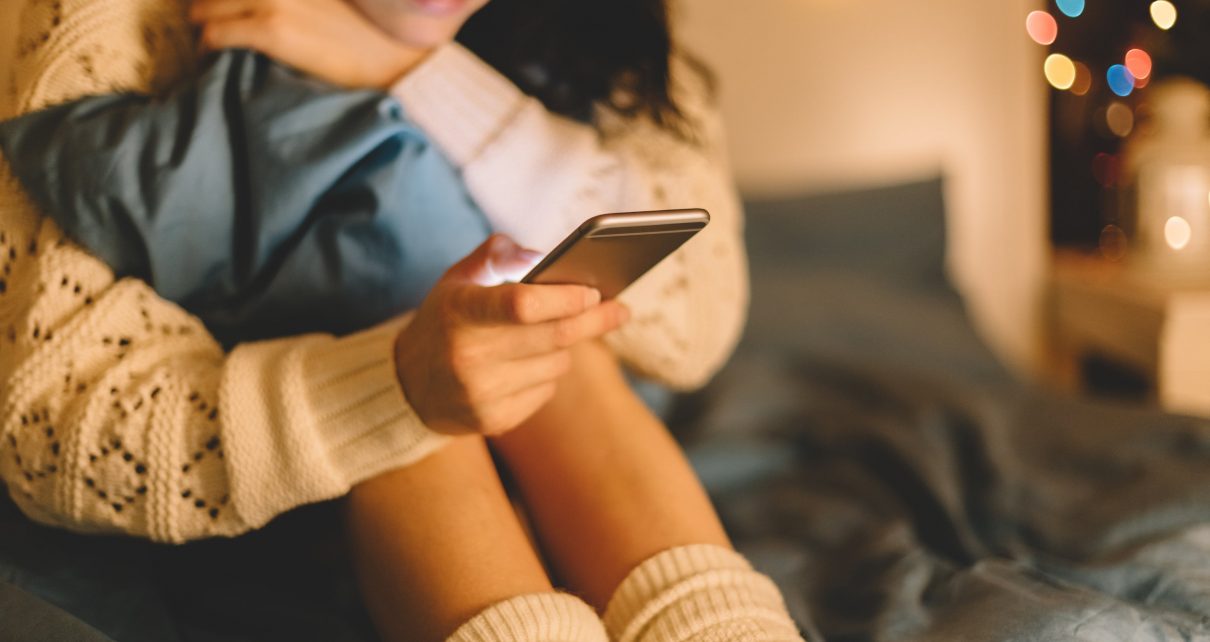To be young and LGBTQ+ in 2020 America means living in a culture of both remarkable progress and pervasive challenges. Same-sex marriage is legal; there’s an increasing number of positive, identity-affirming sexual and gender minority characters in movies and television; celebrities and influencers are out and proud on social media; and many of us are living thriving lives as out professionals, parents and members of the community.
Yet many LGBTQ+ youth continue to face discrimination and denial of their right to express their identity and are still facing unique and emerging mental health challenges in a locked-down era of COVID. As national attention is rightly on racial injustices, and pride celebrations this year focus on the solidarity of the racial and sexual and gender minority movements, there is no better time to focus on how technology can be used to promote justice and supportive community for LGBTQ+ young people.
LGBTQ+ teens still experience mental health challenges at alarmingly high rates compared to our straight, cisgender counterparts. A national survey by the Trevor project found that 39 percent of LGBTQ+ youth had seriously considered suicide in the past year, and the CDC estimates rates of suicidality among LGB youth to be between three and five times that of their straight peers. Young LGBTQ+ Black, Indigenous and People of Color (BIPOC) are at unique risk of experiencing multiple forms of discrimination and aggression (based on the intersectionality of minority identities), that make them particularly susceptible to chronic stress and mental health challenges.
These disparities are particularly acute among transgender and gender non-binary youth. Although coming out as trans or gender non-binary (identifying other than male or female) is increasingly common, discrimination and violence toward youth who identify this way are still rampant. The U.S. Transgender Survey found that 40 percent of transgender adults in America report at least one suicide attempt in their lives (nearly nine times the national average), and 73 percent of those who had attempted suicide did so for the first time when they were under the age of 18. In Black trans or gender non-binary youth, thoughts of suicide and suicide attempts are twice as high as cisgender Black LGBQ youth. While sheltered in place during COVID-19, LGBTQ+ teens may be confined with people who don’t accept them, forcing them back in the closet, back to an identity that does not reflect their reality, and in some cases they may be physically or mentally unsafe. This is even more likely for BIPOC, whose families may not be accepting of their LGBTQ+ identity. The psychological ramifications of this are likely to be deep and long-lasting.
Technology can be a lifeline for many. Adolescents and young adults today have unprecedented access to online information and communities; 95 percent of American teens have a smartphone (or access to one), and 45 percent say they are online “almost constantly.” This generation of LGBTQ+ adolescents often relies on connections made with technology for social support and identity-building, as well as accessing vital information and resources. A national survey of teens and young adults conducted by Hopelab and Wellbeing Trust showed that LGBTQ+ teens are more likely than others to seek out information about depression, anxiety, stress and other mental health issues online. Virtual spaces offer safety and support that may not be available in their offline lives, through providing a space to engage as their authentic selves, often for the first time.
But it’s complicated, and the internet is not necessarily a safe place. Many LGBTQ+ teens are exposed to abuse online. Harassment and cyberbullying are common for LGBTQ+ teens, who are less likely than others to seek help when it happens–and it is doubly rampant for BIPOC young people. Online harassment is nothing new, but this is different. Minority stress theory helps us understand how experiences and expectations of sexuality- gender- and ethnicity-based discrimination create a stress experience unique to people with minority status in society and fuel a range of harmful cognitive states associated with depression, anxiety and suicidality.
As LGBTQ+ young people shelter in place and thus are more likely to be online, this duality of risk and promise is particularly dangerous. Experiencing rejection and abuse at exactly the moment and in exactly the places where young people are seeking refuge can be devastating, and may result in more negative mental health outcomes than we can currently predict.
How can we navigate the double-edged sword of technology for LGBTQ+ teens? In response to COVID, there has been a groundswell of digital services supporting well-being and delivering psychiatric or psychological support to those who need it, but very few of these services are tailored to the emotional and cultural experiences of LGBTQ+ teens, and almost none for BIPOC. LGBTQ+ individuals and people of color consistently report a preference for mental health interventions that are tailored for them. There needs to be a wider offering of support that LGBTQ+ teens experience as safe, comfortable, and culturally appropriate, especially for those who are BIPOC.
The Born This Way Foundation, the Trevor Project, the It Gets Better Project, and media outlets such as Them, for example, provide foundational support to build affirming ideas of the LGBTQ+ experience, strategies to deal with stress, and immediate help in times of crisis. And critically, LGBTQ+ tailored interventions may be more likely to work: in a clinical trial I published with colleagues in Nicotine and Tobacco Research late last year, we showed that an online smoking cessation program tailored to the experience of LGBTQ+ young adults was more effective at helping them quit than one targeted more broadly.
The need for online mental health services tailored to serve LGBTQ+ youth, especially transgender, gender non-binary, and BIPOC youth, is critical in this moment, as their needs are heightened; access to support is limited the dangers are complex; and the potential for harm is profound. Right now, tech and behavioral science hold the potential to meet that need. They’re here, they’re queer, and we have to get used to reaching them where they are, which is online.




